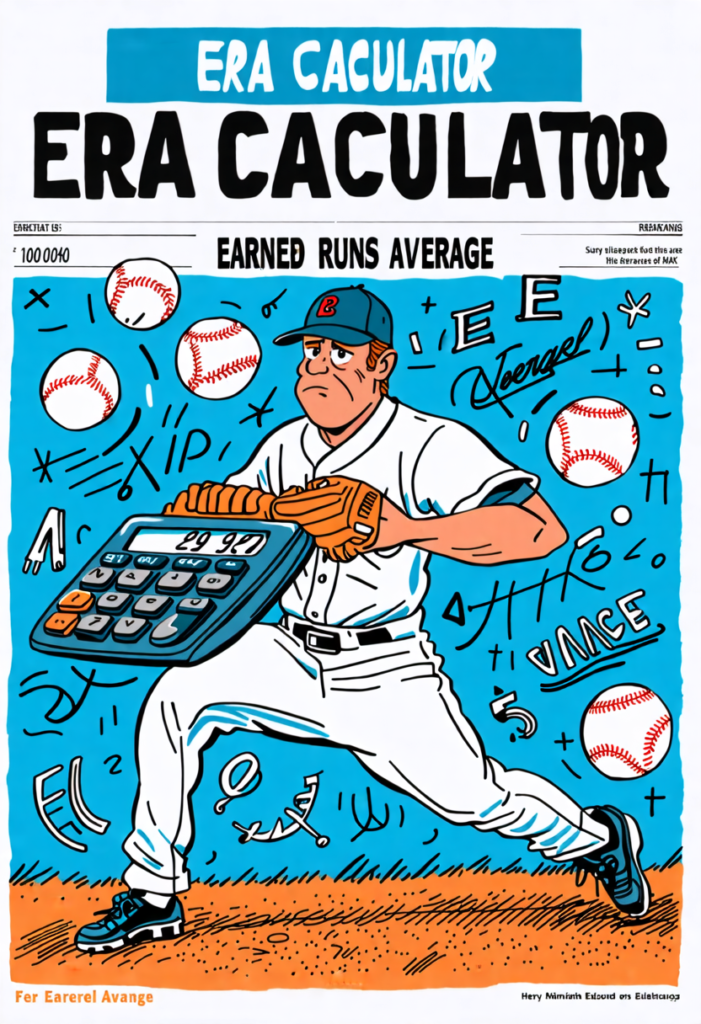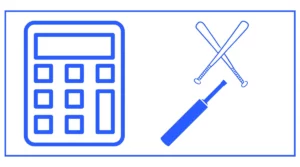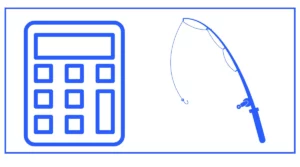ERA Calculator – Earned Runs Average
Are you looking for a baseball metric that is more precise than a winning percentage?
Earned Runs Average (ERA) is for you.
An ERA is a way to figure out how good a pitcher is. It looks at how well he has done throughout all nine innings and how long he has pitched.
The ERA calculator helps you calculate your ERA score. Simply enter the number of earned runs, innings pitched, outs pitched (optional), and innings in a game.

You might want to find your magic number or catch rate.
What is an ERA Calculator?
An ERA calculator is a specialized tool designed to compute a pitcher’s Earned Run Average quickly and accurately. This digital assistant takes the guesswork out of ERA calculations, allowing users to input key data points and receive instant results. Whether you’re a coach analyzing your team’s performance, a fan diving deep into statistics, or a player tracking your own progress, an ERA calculator streamlines the process of evaluating pitching effectiveness.
Using our ERA calculator is straightforward, typically requiring just a few simple steps:
- Enter the number of earned runs allowed by the pitcher.
- Input the number of innings pitched.
- Specify the number of outs recorded, if any partial innings were pitched.
- Provide the standard number of innings per game (usually 9 for baseball, 7 for softball).
- Click “Calculate” to receive the ERA.
The Importance of ERA in Baseball
Measuring Pitcher Performance
ERA serves as a fundamental tool for assessing a pitcher’s performance over time. By focusing on earned runs—those runs scored against a pitcher without the aid of fielding errors—ERA provides a more accurate reflection of a pitcher’s true ability to prevent scoring. This makes it an invaluable metric for coaches when making decisions about pitching rotations, game strategies, and player development.
Comparing Pitchers Across Eras
One of the most significant advantages of ERA is its ability to facilitate comparisons between pitchers from different eras of baseball history. Because ERA is calculated as an average per nine innings, it allows for fair comparisons even when pitchers have thrown vastly different numbers of innings. This universality makes ERA a cornerstone statistic in discussions about the greatest pitchers of all time.
Calculating ERA: The Formula Behind the Tool
The Basic ERA Formula
At its most basic, the formula for calculating ERA is:
ERA = (Earned Runs ÷ Innings Pitched) × 9
This formula takes the total number of earned runs allowed, divides it by the number of innings pitched, and then multiplies the result by 9 (the standard number of innings in a baseball game) to give an average per nine innings.
Adjusting for Partial Innings
In baseball, pitchers don’t always complete full innings. To account for this, the ERA calculator allows users to input outs recorded in addition to full innings pitched. The tool then converts these outs into fractions of an inning (1 out = 1/3 inning, 2 outs = 2/3 inning) for a more precise calculation.
Advanced Features of ERA Calculators
Customizable Game Lengths
While nine innings is the standard for professional baseball, other levels of play may use different game lengths. For example, many softball games are played over seven innings. Advanced ERA calculators allow users to specify the number of innings per game, ensuring accurate calculations across different baseball and softball formats.
Historical Data Integration
Some sophisticated ERA calculators offer integration with historical databases, allowing users to compare calculated ERAs with league averages or all-time leaders. This feature provides valuable context, helping users understand where a particular ERA stands in the broader landscape of baseball history.
Interpreting ERA: What the Numbers Mean
What Constitutes a Good ERA?
Interpreting ERA requires some context, as what’s considered “good” can vary depending on the era, league, and level of play. However, as a general guideline:
- An ERA under 2.00 is considered excellent
- An ERA between 2.00 and 3.00 is very good
- An ERA between 3.00 and 4.00 is average
- An ERA above 4.00 is below average
It’s important to note that these benchmarks can shift over time as the game evolves. For example, during the “dead-ball era” in the early 20th century, ERAs were typically much lower than they are today.
Factors Affecting ERA
Several factors can influence a pitcher’s ERA beyond their individual performance:
- Ballpark dimensions
- Quality of team defense
- League-wide offensive trends
- Weather conditions
ERA calculators provide the raw numbers, but interpreting these results requires consideration of these contextual factors.
ERA in Different Contexts
ERA in Major League Baseball (MLB)
In MLB, ERA is one of the most closely watched pitching statistics. It plays a significant role in determining various awards, including the Cy Young Award for the best pitcher in each league. The ERA calculator becomes an essential tool for fans and analysts tracking the performance of MLB pitchers throughout the season.
ERA in Amateur and Youth Baseball
At lower levels of play, such as college, high school, or little league games, ERA remains an important metric but may require some adjustment in interpretation. Fielding errors are more common at these levels, potentially inflating ERAs. Coaches and players can use ERA calculators to track progress and set improvement goals, keeping in mind the context of their level of play.
Beyond ERA: Related Pitching Statistics
While ERA is a crucial metric, it’s often used in conjunction with other statistics to provide a more comprehensive view of a pitcher’s performance. Some related statistics include:
- WHIP (Walks plus Hits per Inning Pitched)
- FIP (Fielding Independent Pitching)
- K/9 (Strikeouts per 9 innings)
- BB/9 (Walks per 9 innings)
Advanced ERA calculators may offer the ability to compute these additional statistics, providing users with a more rounded statistical profile of a pitcher’s performance.
ERA Calculator: Tips for Accurate Use
To ensure you’re getting the most out of your ERA calculator, consider the following tips:
- Double-check your inputs: Small errors in entered data can lead to significant inaccuracies in the calculated ERA.
- Use consistent game lengths: When comparing ERAs, ensure you’re using the same number of innings per game for all calculations.
- Consider sample size: ERA can be volatile over small sample sizes. A larger number of innings pitched generally provides a more reliable ERA.
- Update regularly: For active pitchers, recalculate ERA after each game or appearance to track trends over time.
Common Misconceptions About ERA
ERA vs. Runs Allowed
One common misconception is that ERA accounts for all runs allowed by a pitcher. In fact, ERA only considers earned runs, excluding runs that score as a result of fielding errors. This distinction is crucial for accurately assessing a pitcher’s performance independent of their team’s defensive capabilities.
The Impact of Relief Pitching on ERA
With the increasing specialization of relief pitchers in modern baseball, it’s important to recognize that ERA may not always provide a complete picture of a relief pitcher’s effectiveness. Inherited runners and situational usage can impact a reliever’s ERA in ways that may not fully reflect their performance.
ERA Calculator: A Tool for Every Level of the Game
From professional statisticians to little league coaches, the ERA calculator serves as a valuable resource across all levels of baseball and softball. Its versatility and ease of use make it an indispensable tool for anyone looking to gain deeper insights into pitching performance.
For Coaches
Coaches can use ERA calculators to:
- Evaluate pitcher performance objectively
- Make informed decisions about pitcher usage and rotation
- Track player development over time
For Players
Players benefit from ERA calculators by:
- Setting personal performance goals
- Tracking their progress throughout a season
- Comparing their performance to teammates and competitors
For Fans and Analysts
ERA calculators enable fans and analysts to:
- Engage more deeply with the game’s statistics
- Make informed arguments in discussions about pitcher effectiveness
- Gain a better understanding of historical pitching performances
The Future of ERA and Pitching Analytics
As baseball analytics continue to evolve, ERA remains a foundational statistic, but new metrics are emerging to provide even more nuanced evaluations of pitching performance. Advanced ERA calculators may incorporate some of these newer statistics, offering users a bridge between traditional and cutting-edge analytics.
Emerging Pitching Metrics
Some newer pitching metrics that complement ERA include:
- xERA (Expected ERA based on quality of contact)
- SIERA (Skill-Interactive ERA)
- DRA (Deserved Run Average)
While these advanced metrics offer additional insights, they often require more complex calculations, highlighting the ongoing value of simple, accessible tools like the basic ERA calculator.
Frequently Asked Questions
To address common queries and enhance understanding, here are some frequently asked questions about ERA calculators:
- Q: Can ERA calculators be used for softball?
A: Yes, ERA calculators can be used for softball. Just be sure to adjust the innings per game setting to match the standard game length in softball (typically 7 innings). - How often should I recalculate a pitcher’s ERA?
For the most current assessment, recalculate ERA after each pitching appearance. However, for a more stable measure, you might consider calculating ERA on a weekly or monthly basis. - Does ERA account for unearned runs?
No, ERA specifically excludes unearned runs (those scored due to fielding errors) to focus on the pitcher’s performance. - Can ERA be calculated for a single game?
Yes, you can calculate ERA for a single game. However, single-game ERAs can be quite volatile and are less commonly used than season or career ERAs. - How does ERA differ in different levels of play?
Generally, ERAs tend to be higher in lower levels of play due to factors like less experienced fielders and hitters. Context is important when interpreting ERA across different levels.






